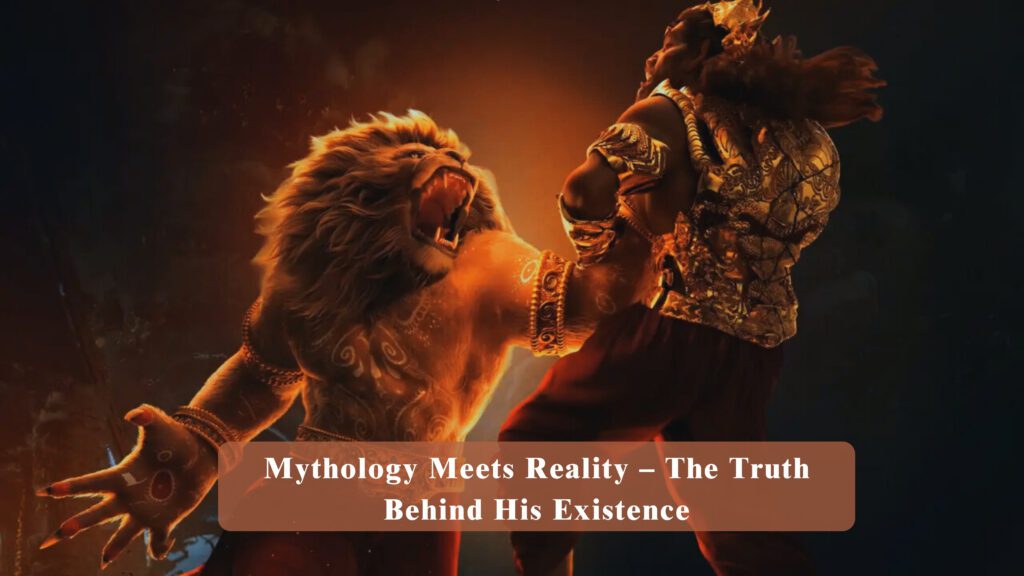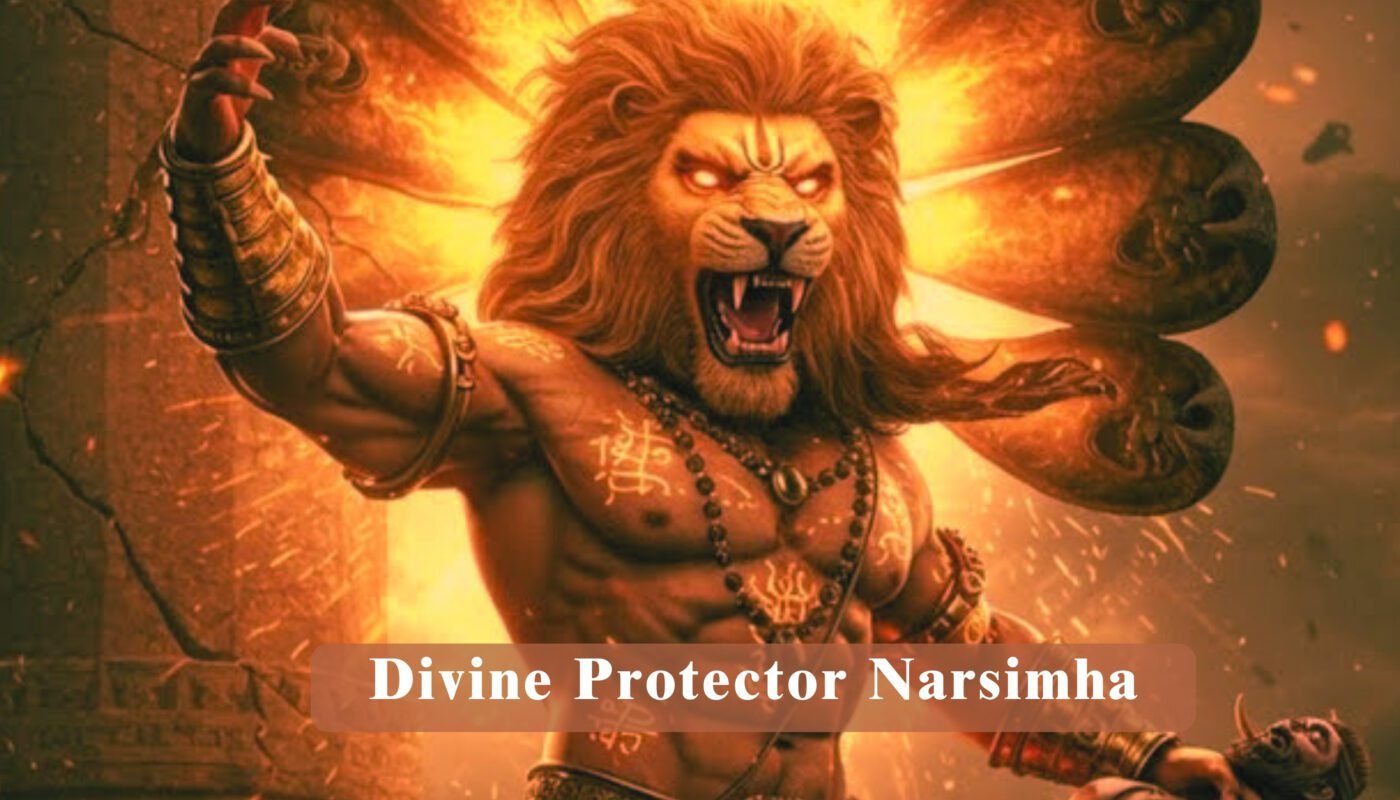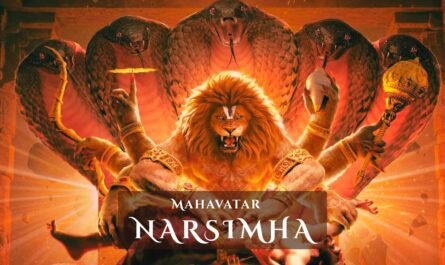When I stepped out of the cinema after watching Divine Protector Narsimha, I didn’t just feel entertained—I felt shaken, inspired, and almost spiritually awakened. This wasn’t just a movie. It felt like stepping into a forgotten chapter of time where gods and demons still walked among men, and cosmic justice wasn’t merely a concept—it was a living, breathing force.
I had always read the story of Narsimha as a part of Hindu mythology: the ferocious half-lion, half-man incarnation of Vishnu who emerged to destroy the tyrant Hiranyakashipu and protect his devout son, Prahlad. But this film went beyond simple storytelling—it blurred the boundary between legend and life, making Divine Protector Narsimha feel less like a myth and more like a timeless truth.
From the very first frame, I knew I was in for an extraordinary ride. The haunting soundscape of temple bells and ancient chants filled the hall, and the visuals transported me into an era where belief was not questioned but felt. Watching Divine Protector Narsimha was like witnessing faith manifest into flesh and fury right before my eyes.
The Immersive Opening That Grabs You Instantly
The film begins not with action but with stillness—a serene depiction of an ancient kingdom. The camera lingers on temples carved into stone, flickering lamps, and priests whispering verses into the wind. This calmness sets the stage perfectly because it makes the chaos that follows even more impactful.
Suddenly, we see Hiranyakashipu’s dominance: a ruler who mocks the gods, commands fear, and bends mortals to his will. The contrast between this oppressive rule and Prahlad’s unwavering devotion establishes the moral heart of the movie. As I watched young Prahlad chant “Om Namo Narayanaya” fearlessly despite threats, I felt my throat tighten. His faith isn’t dramatized—it’s portrayed with raw innocence that makes you root for him instantly.
It’s in these early moments that the film starts weaving the legend into our emotions, setting up why Divine Protector Narsimha would eventually have to rise.
Witnessing His Celestial Descent
Then came the scene that defined the movie for me—the arrival of Divine Protector Narsimha. Even though I knew it was coming, I wasn’t prepared for the sheer power of its execution. The pillar begins to tremble, cracks run through stone, and silence engulfs the room before a roar tears through it all.
The transformation sequence was breathtaking—not because of overdone CGI, but because it felt grounded. The camera doesn’t rush; it lingers, allowing us to take in every terrifying and magnificent detail: the golden mane flowing like fire, the lion-like snarl, the blazing eyes filled with divine fury. It didn’t feel like special effects—it felt real.
For a moment, I forgot I was in a theater. When Divine Protector Narsimha stepped forth, I felt a presence that was larger than cinema—it was almost spiritual, like a living energy filling the hall.
The Battle That Defines Justice
The battle between Divine Protector Narsimha and Hiranyakashipu is unlike any fight scene I’ve seen. This isn’t a flashy duel with heroic postures—it’s primal. The clash feels inevitable, brutal, and terrifying in its simplicity. There are no weapons, no grand choreography, just claws and raw divine strength overpowering arrogance.
The most haunting shot is when Divine Protector Narsimha pins Hiranyakashipu across his lap, delivering the fatal strike with his claws at twilight. The film doesn’t romanticize it; it shows his rage as both terrifying and necessary. For the first time, I understood why this form of Vishnu inspires reverence mixed with fear—it’s a reminder that divine justice is not always gentle.
As the camera pulls back to show the aftermath, Prahlad kneels and bows, tears streaming down his face, chanting in gratitude. At that moment, the entire theater seemed to hold its breath. You could feel the weight of what had just unfolded.
Exploring the Mythology Behind the Avatar
One of the film’s strongest achievements is its explanation of the deeper meaning behind Divine Protector Narsimha. Instead of just narrating a myth, it contextualizes his role in the grand cycle of dharma (cosmic order).
The dialogues by sages in the film are profound. One scene shows an ancient ascetic explaining: “When arrogance shrouds the heavens and mortals forget balance, the Divine Protector comes—not for one man, but for the harmony of all existence.”
This shifted my understanding. The film suggests that Divine Protector Narsimha isn’t simply about slaying Hiranyakashipu; he represents a cosmic principle—a safeguard built into the universe itself to restore order whenever chaos overtakes righteousness.
How the Movie Feels Relevant Today
What stunned me most is how relevant the story feels in today’s world. As I watched, I couldn’t help but draw parallels to our own time—where greed, ego, and corruption often overshadow justice and compassion. Hiranyakashipu may be a mythic demon king, but his arrogance felt eerily modern.
In this sense, Divine Protector Narsimha isn’t just an ancient legend—it’s symbolic of something timeless: that no matter how powerful darkness becomes, there will always be a force that rises to confront it. Whether it’s divine or born from human courage, that force is inevitable.
The Cinematic Brilliance of Divine Protector Narsimha

The technical craftsmanship of this film deserves its own praise. The director’s use of practical effects combined with restrained CGI made everything feel real. The costume design for Divine Protector Narsimha was extraordinary—rather than a glossy superhero look, it felt raw, rooted in cultural authenticity.
The music deserves special mention too. The sound of mridangams (drums), conch shells, and chants created a spiritual tension that built up to his arrival scene. During those moments, I felt goosebumps not because of visuals alone but because the sound made me feel like I was inside a temple witnessing a divine manifestation.
Performances That Elevate the Story
The casting was perfect. The actor playing Prahlad captured innocence and unshakable faith so convincingly that I couldn’t hold back tears in his scenes of defiance. Meanwhile, Hiranyakashipu’s portrayal was chilling—his arrogance was so palpable it made Narsimha’s wrath feel earned and justified.
And then there’s Divine Protector Narsimha himself. The physicality, the voice modulation, and the raw energy of that performance were astonishing. This wasn’t someone in costume—it felt like watching a force of nature unleashed.
Why This Movie Left Me Changed
As the film closed with devotional chants echoing, I remained in my seat. I wasn’t ready to leave. Watching Divine Protector Narsimha didn’t just tell me a story—it made me reflect deeply on faith, courage, and justice.
This wasn’t just cinema; it felt like a spiritual reminder. It reminded me that in every age, when arrogance threatens balance, something—whether divine or human—will emerge to correct it. That truth stayed with me long after I walked out of the hall.
Final Thoughts: Divine Protector Narsimha Is More Than a Movie
If you only see it as a mythological spectacle, you’re missing the point. Divine Protector Narsimha is a mirror—it reflects both our ancient roots and the moral challenges of our present.
It’s not just about gods and demons. It’s about faith against fear, justice against tyranny, and the timeless belief that no matter how deep the darkness, light will roar its way through.
Interested in more captivating movie stories and reviews? Click here to dive deeper…




